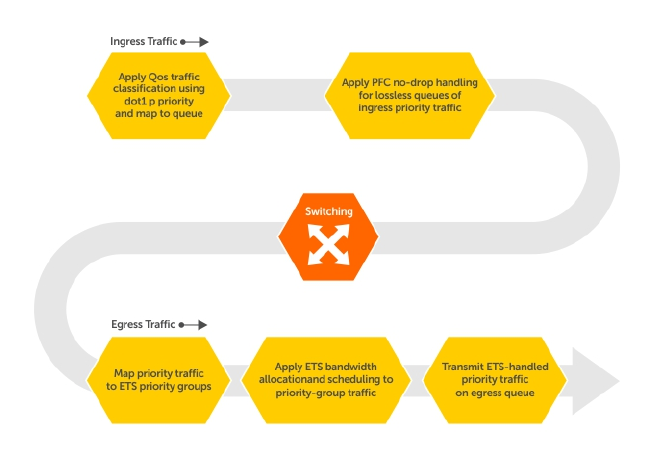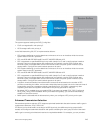
• Discovery of DCB capabilities on peer-device connections.
• Determination of possible mismatch in DCB configuration on a peer link.
• Configuration of a peer device over a DCB link.
DCBx requires the link layer discovery protocol (LLDP) to provide the path to exchange DCB parameters
with peer devices. Exchanged parameters are sent in organizationally specific TLVs in LLDP data units.
The following LLDP TLVs are supported for DCB parameter exchange:
PFC
parameters
PFC Configuration TLV and Application Priority Configuration TLV.
ETS parameters ETS Configuration TLV and ETS Recommendation TLV.
Data Center Bridging in a Traffic Flow
The following figure shows how DCB handles a traffic flow on an interface.
Figure 27. DCB PFC and ETS Traffic Handling
Enabling Data Center Bridging
DCB is automatically configured when you configure FCoE or iSCSI optimization.
Data center bridging supports converged enhanced Ethernet (CEE) in a data center network. DCB is
disabled by default. It must be enabled to support CEE.
• Priority-based flow control
• Enhanced transmission selection
• Data center bridging exchange protocol
• FCoE initialization protocol (FIP) snooping
DCB processes virtual local area network (VLAN)-tagged packets and dot1p priority values. Untagged
packets are treated with a dot1p priority of 0.
Data Center Bridging (DCB)
245


















